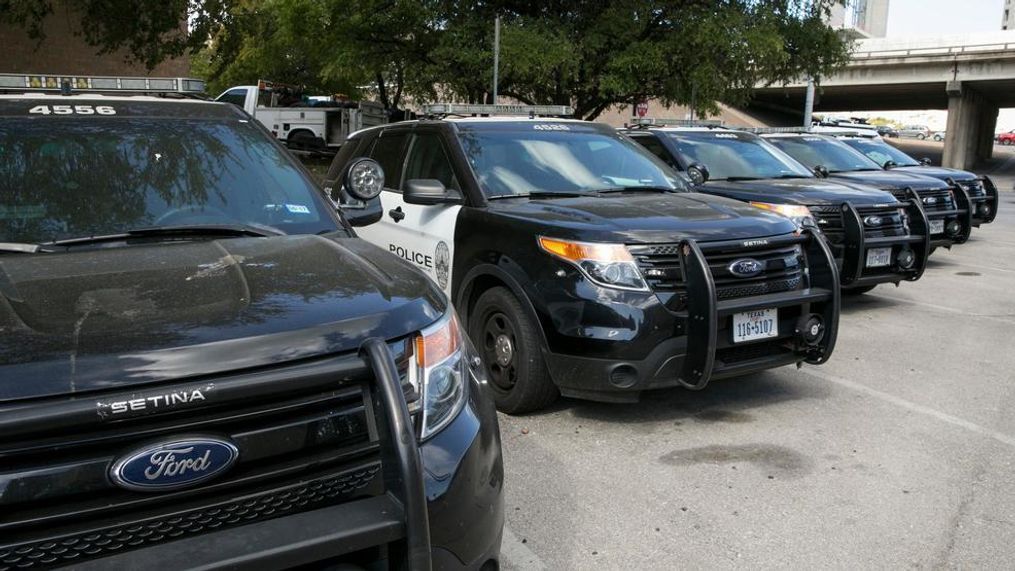Ford repairs Austin police SUVs, but questions linger

DETROIT (AP) — Ford Motor Co. has begun repairing Ford Explorer SUVs in Austin, Texas, that were pulled off police duty because exhaust containing carbon monoxide was seeping into them. But the company faces lingering questions about the safety of thousands of other Explorers on the road.
Ford is repairing police SUVs in Austin and other cities for free. Austin city spokesman David Green said a team from Ford took five of the police department's Explorers to local dealers Monday to teach them how to fix the issue.
Austin pulled nearly 400 Explorers off its patrol fleet late last month because of concerns about carbon monoxide. Green says the city will likely send its entire fleet out for repairs, but he didn't know how long it would take to get them all fixed.
"When we are confident our employees will be safe, they'll be back on the road," Green said.
Ford blames the issue on non-factory outfitters that drill holes into police SUVs to install extra equipment like lights and radios. In visits to police departments, the company has seen multiple examples of holes that weren't sealed properly after the equipment and wiring was installed.
But Ford is still investigating why many non-police consumers have also complained to the automaker and the government about exhaust fumes which contain odorless, colorless carbon monoxide as well as sulfur and other chemicals in their vehicles. It also can't explain why there have been no carbon monoxide complaints about a rival SUV, the Chevrolet Tahoe, which is also used by police.
It's a critical issue for the automaker. The Explorer makes up more than half of all U.S. police vehicle sales, and the seven-passenger SUV is also a big profit generator for the company. Ford has sold more than 1.35 million Explorers since 2011, the model year in which the Explorer was last redesigned.
Bill Gubing, the chief engineer for the Ford Explorer, said Tuesday that Ford hasn't found elevated levels of carbon monoxide in non-police vehicles. One explanation is that police vehicles drive differently than normal SUVs. Police often have to accelerate to full speed from a stopped position, for example, which causes the engine to work harder and emit more exhaust.
"Most average retail customers don't drive like that in freeways," Gubing told The Associated Press.
But Ford clearly knows it has a problem with non-police Explorers. It has issued two bulletins to dealers in December and March telling them how to repair vehicles with exhaust in their cabins, and has told customers with concerns to take their Explorers to a dealer. It also settled a class action lawsuit over the issue in Florida last fall.
The National Highway Traffic Safety Administration has found more than 2,700 complaints of exhaust odors in the passenger compartment in an investigation started a year ago. Among the complaints were three crashes and 41 injuries, mostly loss of consciousness, nausea and headaches. Many but not all of the complaints came from police departments.
The agency tested multiple vehicles at its Ohio research center, and made field inspections of police vehicles involved in crashes. As of Thursday, NHTSA said it had no evidence or data to support claims that injuries or crash allegations were caused by carbon monoxide poisoning. It said tests suggested carbon monoxide levels may be higher in certain driving conditions, but the significance and effect of those levels remain under investigation.
Gubing said the problem isn't found in police cars like the Ford Taurus because the exhaust is usually trapped in the trunk. But he couldn't explain why police departments haven't complained about the Chevrolet Tahoe, which is also fitted with extra equipment. Darrel Stephens, head of the Major Cities Police Chiefs Association, said he hasn't heard about exhaust problems in the Tahoe.
"I wish I could comment on their product design, but I don't have that," Gubing said. "This is not a Ford-specific design problem."
Gubing also said Ford has ruled out cracks in the exhaust manifold as a cause of the problem. NHTSA says tiny cracks in the manifold a cast iron or stainless steel tube that carries combustion gasses to the exhaust could explain why exhaust is entering the cabin. But Gubing said there is no pathway for exhaust to escape from the manifold and into the car.
